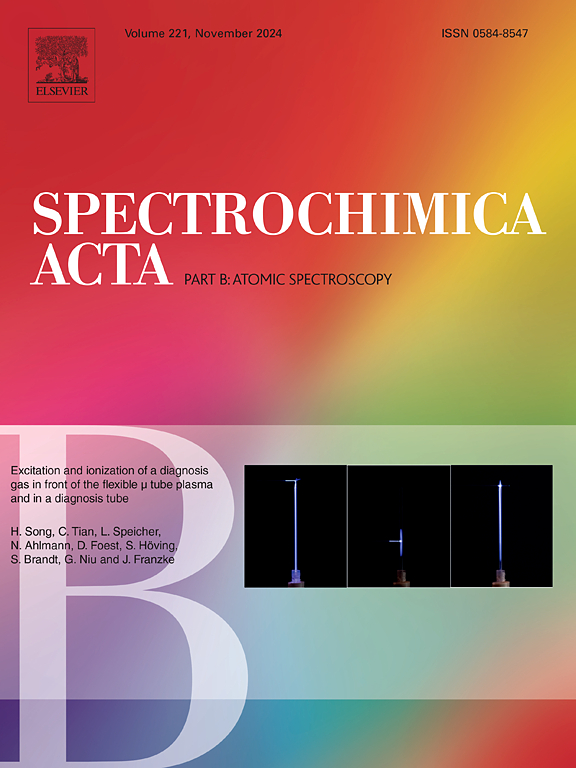Quantifying the accurate content of 107Pd in a radioactive effluent using the isotope dilution technique and multi-collector ICP-MS
IF 3.2
2区 化学
Q1 SPECTROSCOPY
引用次数: 0
Abstract
The radionuclide 107Pd is a long-lived fission product that decays to 107Ag by β− emission. The accurate quantification of the 107Pd content in nuclear waste is essential in compliance with international regulations on the long-term storage of radioactive waste. Moreover, fission-produced Pd holds an economic interest through its recycling for industrial purposes. The accurate quantification of 107Pd is presently problematic due to the absence of a commercial reference material certified for 107Pd content, and because of the scarcity of 107Pd-concentrated materials. In this study, we accurately characterize a purified radioactive effluent for its 107Pd content using multicollector (MC)-ICP-MS and the isotope dilution technique. The developed isotope-dilution method is based on the preparation and calibration of a 108Pd-enriched commercial spike solution. The repeatability of Pd isotope ratios in the radioactive effluent as obtained by MC-ICP-MS was on the order of 0.05 % (2*standard deviation of n = 15 measurements). The 107Pd content in the radioactive effluent was accurately quantified with an expanded uncertainty of 0.7 % at k = 2. The results obtained from the radioactive effluent are metrologically traceable to the International System of Units (SI). Lastly, the sources of uncertainty and their relative contribution on the final expanded uncertainty were determined and evaluated.

求助全文
约1分钟内获得全文
求助全文
来源期刊
CiteScore
6.10
自引率
12.10%
发文量
173
审稿时长
81 days
期刊介绍:
Spectrochimica Acta Part B: Atomic Spectroscopy, is intended for the rapid publication of both original work and reviews in the following fields:
Atomic Emission (AES), Atomic Absorption (AAS) and Atomic Fluorescence (AFS) spectroscopy;
Mass Spectrometry (MS) for inorganic analysis covering Spark Source (SS-MS), Inductively Coupled Plasma (ICP-MS), Glow Discharge (GD-MS), and Secondary Ion Mass Spectrometry (SIMS).
Laser induced atomic spectroscopy for inorganic analysis, including non-linear optical laser spectroscopy, covering Laser Enhanced Ionization (LEI), Laser Induced Fluorescence (LIF), Resonance Ionization Spectroscopy (RIS) and Resonance Ionization Mass Spectrometry (RIMS); Laser Induced Breakdown Spectroscopy (LIBS); Cavity Ringdown Spectroscopy (CRDS), Laser Ablation Inductively Coupled Plasma Atomic Emission Spectroscopy (LA-ICP-AES) and Laser Ablation Inductively Coupled Plasma Mass Spectrometry (LA-ICP-MS).
X-ray spectrometry, X-ray Optics and Microanalysis, including X-ray fluorescence spectrometry (XRF) and related techniques, in particular Total-reflection X-ray Fluorescence Spectrometry (TXRF), and Synchrotron Radiation-excited Total reflection XRF (SR-TXRF).
Manuscripts dealing with (i) fundamentals, (ii) methodology development, (iii)instrumentation, and (iv) applications, can be submitted for publication.

 求助内容:
求助内容: 应助结果提醒方式:
应助结果提醒方式:


